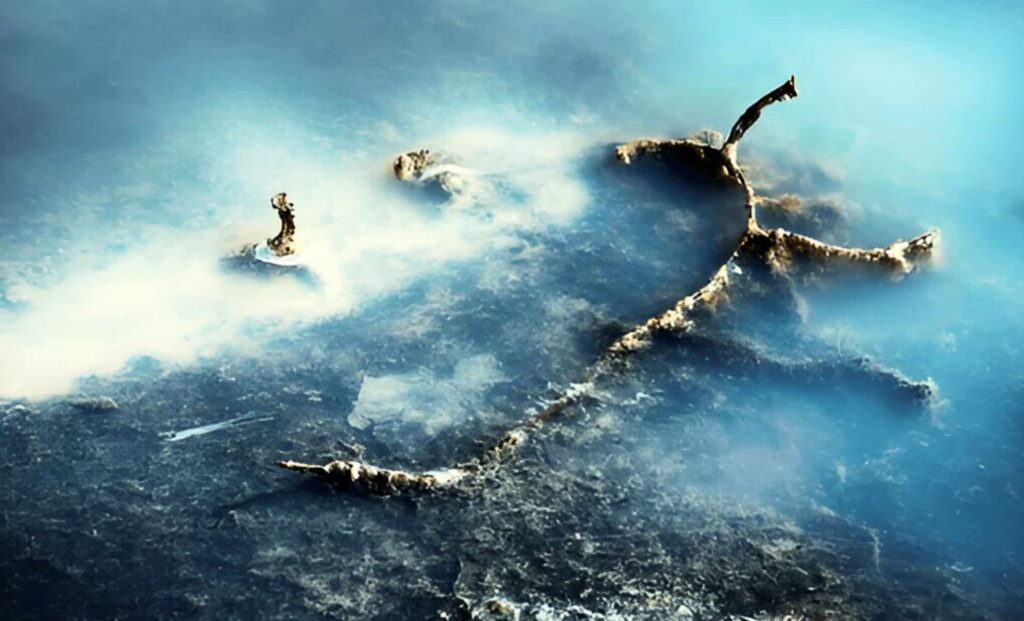Over the course of Earth’s history, life has been decimated by cataclysmic events, each one leaving an indelible mark on the planet’s biodiversity. For millions of years, creatures that once thrived have vanished, victims of forces beyond their control. But now, scientists fear humanity itself may be driving the planet toward a sixth mass extinction—one unlike any before it.
A Pattern of Extinctions
According to Our World in Data, Mass extinctions are not new to Earth. For over 500 million years, the planet has experienced five major biological crises, during which at least half of all species were wiped out. These events, though catastrophic, have shaped the course of evolution, clearing the way for the emergence of new life forms. From the icy oceans of the Ordovician period to the asteroid strike that ended the age of dinosaurs, extinction has been a recurring theme in the story of life on Earth.
The first of these catastrophic events took place around 445 million years ago, during the Ordovician period. It is estimated that up to 70 percent of marine species disappeared, most likely due to a short but intense ice age that reduced sea levels. Experts believe that the sudden formation of glaciers caused temperatures to plummet, making life in the oceans unsustainable for many species.
The Dominance of Extinction Events
The second mass extinction, known as the Devonian, took place roughly 360 million years ago. It resulted in the loss of about 75 percent of species. Marine life again suffered the most, with oxygen depletion in the oceans being a likely culprit. Some scientists believe that the proliferation of land plants, which led to increased organic material in the oceans, caused oxygen levels to drop, creating conditions where life could no longer survive.
But the Permian extinction, which occurred around 252 million years ago, was by far the most devastating. Known as the “mother of all extinctions,” it obliterated 95 percent of Earth’s species. Volcanic eruptions and possible asteroid impacts are considered the primary causes, though the exact timeline remains debated. The Permian extinction wiped out almost all life, including many insects, in a span that could have been as short as 200,000 years.
The Triassic extinction followed about 200 million years ago and is shrouded in mystery. While evidence points to volcanic activity and the breakup of the supercontinent Pangea as possible causes, the details remain unclear. The result, however, was unmistakable: the loss of up to 80 percent of species, including large amphibians and early reptiles. This paved the way for the rise of dinosaurs, which dominated the planet for the next 150 million years.
A Human-Caused Extinction
The Cretaceous extinction, which occurred around 66 million years ago, was caused by the impact of an asteroid, as confirmed by the discovery of a crater in the Yucatan Peninsula. The asteroid strike wiped out 75 percent of life, including the non-avian dinosaurs. Despite the devastation, many species, including mammals and certain marine life, managed to survive. This event ultimately led to the rise of mammals, and with them, the eventual appearance of humans.

Today, the Earth faces the prospect of a sixth extinction event. Unlike its predecessors, which were caused by natural forces such as volcanic eruptions, ice ages, and asteroid impacts, this one is primarily driven by human activity. According to a report from the United Nations, up to a million species could be at risk of extinction in the coming decades, many due to habitat destruction, pollution, and climate change.
This looming crisis has already begun. Over the past 500 years, humans have caused the extinction of at least 680 vertebrate species. As human populations grow and industrialization continues, the rate of species loss is accelerating. Experts warn that we are on the verge of losing more species at a faster pace than ever before in Earth’s history.
The UN’s report, based on the work of 150 experts from 50 countries, highlights the alarming trend in biodiversity loss. The experts point to “independent evidence” suggesting an imminent and rapid increase in extinction rates. With an estimated 8 million species on Earth, including about 5.5 million species of insects, scientists predict that between half a million and a million species could face extinction soon. Many of these species are already on the brink, and without immediate action, they may be lost forever.

